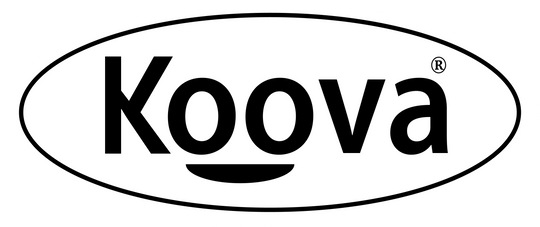Frequently Asked Questions
1. What is color-coding and how can it help with organization?
2. How do I choose a color palette for my organizing system?
3. In which areas can I apply color-coding?
4. What steps should I follow to implement a color-coding system?
5. How can color-coding assist with emotional organization?
In an ever-evolving world filled with distractions and clutter, maintaining an organized space is essential. Whether it's your home or workspace, having a well-structured organizing system can significantly enhance productivity and reduce stress. One of the most effective methods to streamline your organization is through color-coding. In this blog post, we will explore how color-coding can transform your organizing system and discuss practical applications, including specific areas like your wakeboard rack.
Understanding the Benefits of Color-Coding
Color-coding is more than just a visually appealing strategy; it offers numerous advantages that can improve your organizational skills and overall efficiency. Here are some key benefits:
- Enhanced Visual Clarity: Different colors evoke different emotions and can make it easier to spot what you need at a glance.
- Improved Sorting: Assigning colors to specific categories helps in sorting and categorizing items quickly.
- Reduced Stress: A visually organized space can lead to a calmer mindset, allowing you to focus on vital tasks.
- Increased Productivity: The time saved searching for items leads to a more efficient working environment.
Choosing Your Color Palette
Before implementing a color-coding system, it’s essential to select a color palette that resonates with you and aligns with your organizational needs. Here are some tips for choosing the right colors:
Consider Color Psychology
Colors can significantly impact your mood and behavior. Here are some common associations:
- Red: Energy, passion, and urgency.
- Blue: Calmness, trust, and responsibility.
- Green: Balance, renewal, and nature.
- Yellow: Optimism, creativity, and happiness.
Understanding these associations can help you select colors that will motivate and inspire you throughout your day. For instance, if you are organizing a workspace, you might opt for calm blues and greens and reserve energizing colors like red and yellow for creative projects.
Limit Your Color Choices
While it may be tempting to use a rainbow of colors, limiting your palette to around five key colors can make your system more straightforward and easier to navigate. Consider choosing a primary color and complementing it with a few additional shades that offer contrast and clarity.
Applying Color-Coding in Different Spaces
The beauty of color-coding is that it can be applied in various settings, from your home office to your garage. Below, we’ll explore some specific areas where color-coding can significantly enhance organization.
Home Office
Your home office can benefit immensely from a color-coded system. Here’s how:
- Folders: Use specific colors for each project or client. Blue for pending tasks, green for completed work, and yellow for urgent matters.
- Pens and Supplies: Organize writing tools by color. For example, use red for important reminders and black or blue for standard writing needs.
- Calendars: Employ color-coding in your schedule to differentiate between personal, professional, and family events.
Kitchen Organization
Color-coding can also streamline your kitchen organization:
- Labeling Containers: Assign colors to different food groups—red for proteins, green for vegetables, and yellow for grains.
- Utensils: Keep cooking tools in color-coded drawers or containers to simplify meal preparations and ensure efficiency.
Garage and Storage Areas
In spaces like your garage, a color-coded organizing system can help differentiate between various activities or interests:
- Tools: Use color-coded bins for different types of tools (a red bin for power tools, a blue one for hand tools, etc.).
- Outdoor Gear: For wakeboarding enthusiasts, consider color-coding your wakeboard rack to separate boards by size, style, or usage. This method reduces time searching for the right board and keeps your gear easily accessible.
Implementing Your Color-Coding System
The following steps will guide you through implementing your new color-coding system efficiently:
Step 1: Make a Plan
Begin by mapping out the areas you wish to organize and decide which items will be color-coded. Consider the types of categories that would work best for you.
Step 2: Gather Supplies
Gather the necessary supplies including colored labels, bins, folders, or even paint if needed. Ensure the materials you select are durable and easy to identify at a glance.
Step 3: Sort Items
Before color-coding, sort through your stuff to declutter. Get rid of items you don’t need or use. This step helps in reducing clutter and allows for a clearer organization process.
Step 4: Assign Colors
Once you have your items sorted, assign colors based on the categories you outlined in your plan. Be consistent in applying these colors across your organizing systems for maximum efficiency.
Step 5: Maintain Your System
Regularly review and maintain your color-coded system. Add new categories or colors as needed and make adjustments if you find certain colors aren’t working for your organization style.
Color-Coding for Emotional Organization
Color-coding also plays a vital role in emotional organization. By assigning colors that resonate with particular feelings or tasks, you can create a system that not only organizes your physical space but helps manage your emotional landscape:
- Calm Colors: Use soft blues and greens to encourage a relaxed atmosphere.
- Energetic Colors: Bright yellows or oranges can ignite creativity and enthusiasm during brainstorming or project planning sessions.
Using Color-Coding for Seasonal Adjustments
As seasons change, so do our organizational needs. Implement a seasonal color-coding system to adapt your space throughout the year:
- Spring Cleaning: Use fresh greens and blues to organize gardening tools or cleaning supplies for spring.
- Summer Activities: Bright yellows and corals can designate summer gear such as beach items, outdoor furniture, or sports equipment like wakeboards.
Final Thoughts on Organizing with Color
Incorporating a color-coding system into your organizing process can not only enhance efficiency but also make your environment more visually appealing. By aligning colors with specific categories and tasks, you’ll find yourself navigating your space with ease. Remember, whether you're putting together a structured home office or organizing your wakeboard rack, consistency is key to maintaining an effective system. Now, go ahead and embrace the vibrant world of color-coding, turning chaos into order one shade at a time!


